Professor Hongyu Yu’s and Assistant Professor Kwai Hei Li’s research groups from the School of Microelectronics (SME) at the Southern University of Science and Technology (SUSTech) have recently achieved significant progress in the fields of wide-bandgap semiconductor devices. Their featured topics consist of Ga2O3 MIS-SBD, Diesel soot particulate detector based on AlGaN/GaN HEMT sensor, GaN-based LED with on-chip photodetector, non-contact surface roughness measurement device, and high-performance GaN LED stripes.
Their results have been published in high-ranking international journals in the areas of microelectronic devices and sensors, respectively, including IEEE Transactions on Electron Devices and Sensors and Actuators: B Chemical.
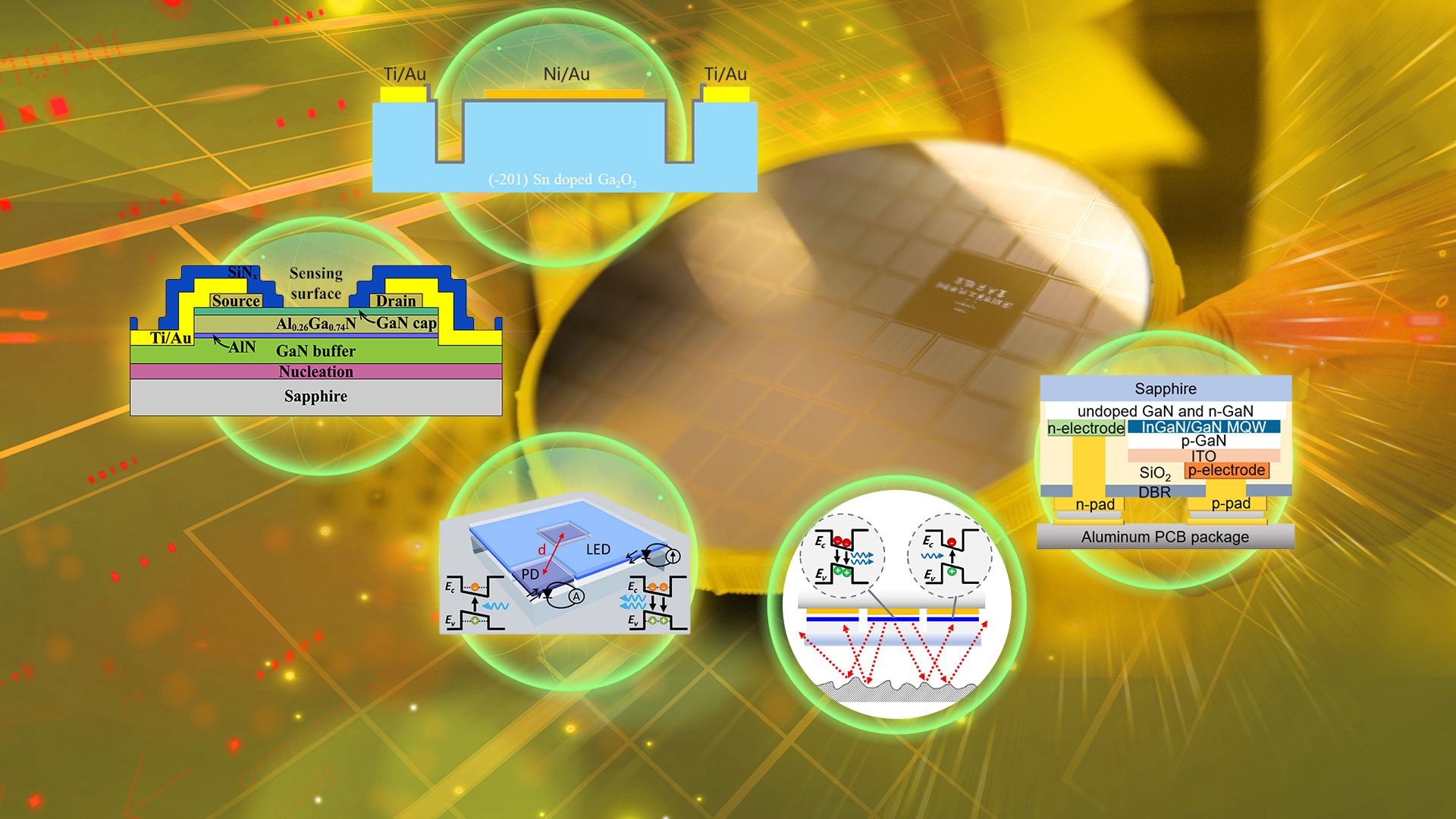
Ga2O3 MIS-SBD with high-quality Schottky interface
Ga2O3 is an emerging candidate for next-generation power devices as the demands for high-power, high-voltage, and high-temperature applications are increasing. It has properties of wide bandgap (4.9 eV), high critical E-field (8 MV/cm), high thermal stability, and high chemical stability. In addition, the melt-growth technique for Ga2O3 promises a cost-effective future for its bulk device platform.
Prof. Hongyu Yu’s research group reported a method to improve the metal-semiconductor interface by inserting an Al-reaction layer in between. The resulting device performs an ultra-low subthreshold swing, decreased leakage current, and improved device consistency as well as yields.
The above results were published in IEEE Transactions on Electron Devices, entitled “Improvement of β-Ga2O3 MIS-SBD Interface Using Al-Reacted Interfacial Layer”.
Minghao He, a doctoral student at SUSTech, is the first author of the above paper. SUSTech is the first unit of this paper. This project was supported by the Department of Science and Technology of Guangdong Province and the Shenzhen Science and Technology Innovation Commission.
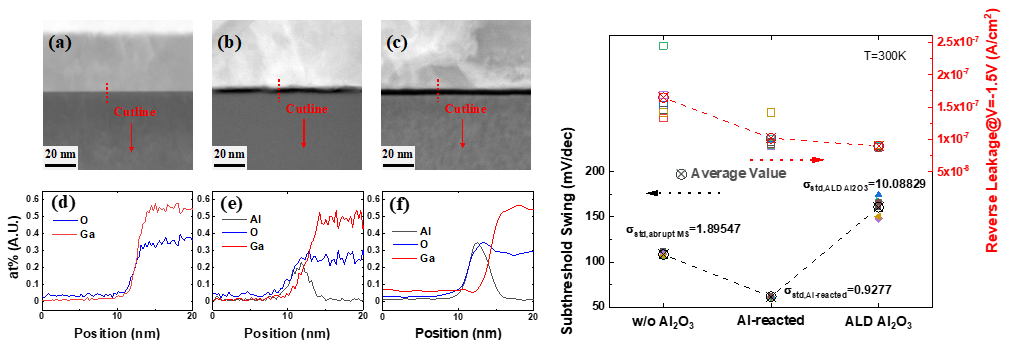
Figure 1. (Left) TEM image and EDS results of SBD with different setups. (Right) Electrical performance summary of the SBDs.
Diesel soot particulate detector based on AlGaN/GaN HEMT sensor
The combustion of hydrocarbon fuels in internal combustion engines produces solid carbonaceous particulate matter (PM), known as soot. The accumulation of these particulates in densely populated areas contributes to overall air pollution and may cause cardio-respiratory and other illnesses.
Prof. Hongyu Yu’s group demonstrated a PM micro-sensor for exhaust systems based on a gateless wide-bandgap AlGaN/GaN high electron mobility transistor structure, as illustrated in Figure 1. Particle adsorption at the rate of 0.25 μg/min on the sensor surface resulted in a 5.52% sensing response after 20 s and a large signal variation of 4.44 mA. This indicated a fast response time, essentially without a dead-band period, which is a known problem of conventional IDE soot sensors. The highest obtained response signal occurred was 34.72% (27.94 mA), obtained after ten minutes of deposition. The sensor was also able to withstand regeneration at 600 °C in air and was still operational without degradation of sensing properties.

Figure 2. Schematic cross-section (a) and top-view micrograph (b) of the fabricated PM sensor.
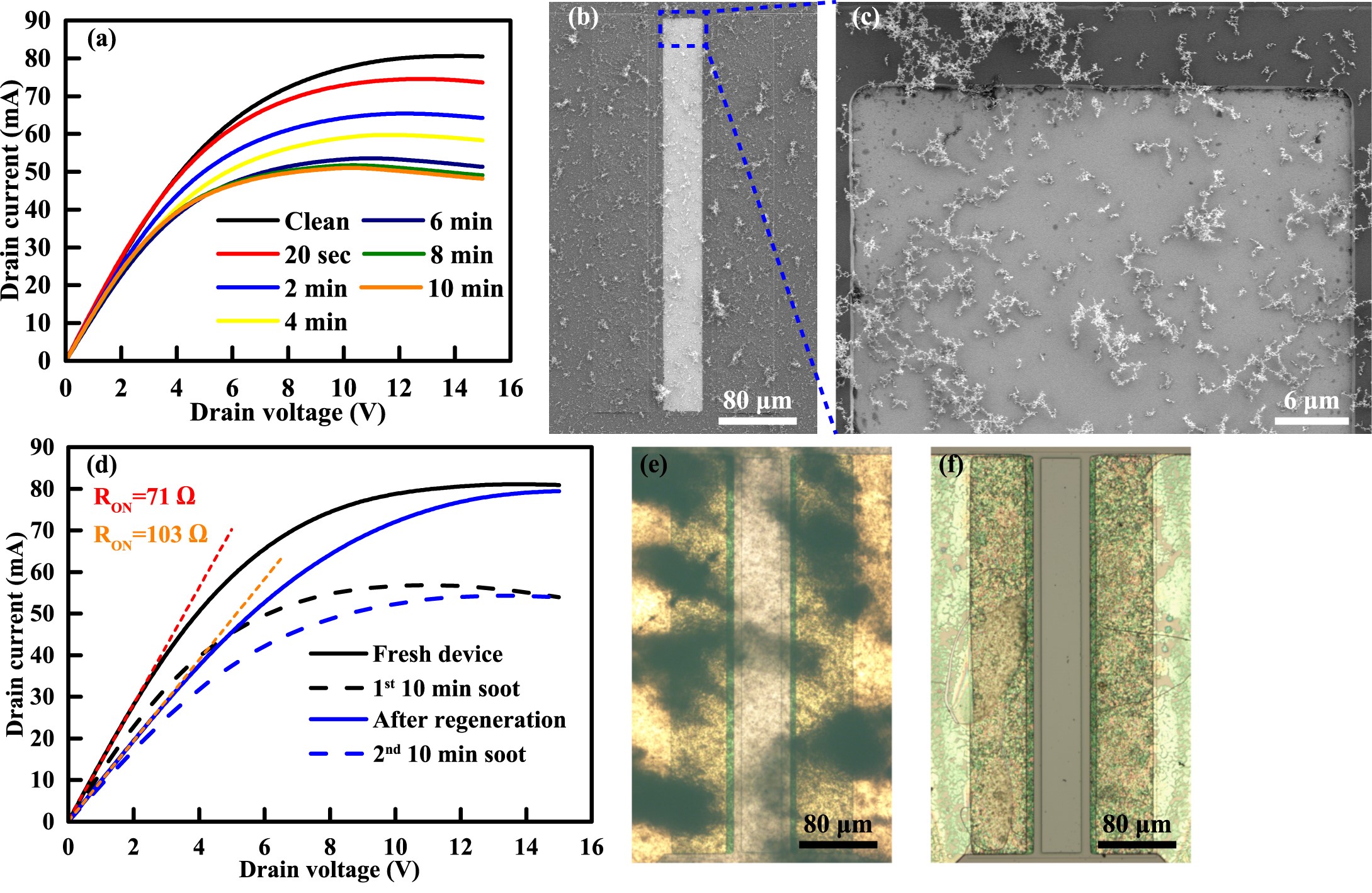
Figure 3. (a) Output characteristics of the gateless soot sensor with increasing particle deposition time. SEM images of the sensor surface after 20 s of deposition (b), (c). Optical micrographs of the sensing area after (e) PM deposition and after (f) thermal regeneration at 600 °C.
The paper, entitled “Application of a gateless AlGaN/GaN HEMT sensor for diesel soot particulate detection,” was published in Sensors and Actuators: B Chemical.
Dr. Robert Sokolovskij, Research Assistant Professor of SME at SUSTech, is the first author of the above paper. SUSTech is the first unit of this paper. This project was supported by the Department of Science and Technology of Guangdong Province and the Shenzhen Science and Technology Innovation Commission.
GaN-based white light-emitting diode with on-chip photodetector
Prof. Kwai Hei Li’s team proposed to integrate light source and micro photodetector on GaN-based epitaxial chip to monitor the change of luminous intensity and realize white light illumination by covering with yellow phosphors.
Through theoretical simulation, the relationship between detector position and detection efficiency was explored, and experiments verified the accuracy of simulation results. Compared with the detector at the edge, the design at the center can improve the detection efficiency by 58 %. It was also found that the detection ability of the on-chip detector was equivalent to that of the traditional external photodetector, and its response time was less than 1 μs。
Their results were published in IEEE Transactions on Electron Devices, entitled “Phosphor-Based InGaN/GaN White Light-Emitting Diodes With Monolithically Integrated Photodetectors”.
Jiahao Yin, a doctoral student at SUSTech, is the first author of this paper. SUSTech is the first unit of this paper.
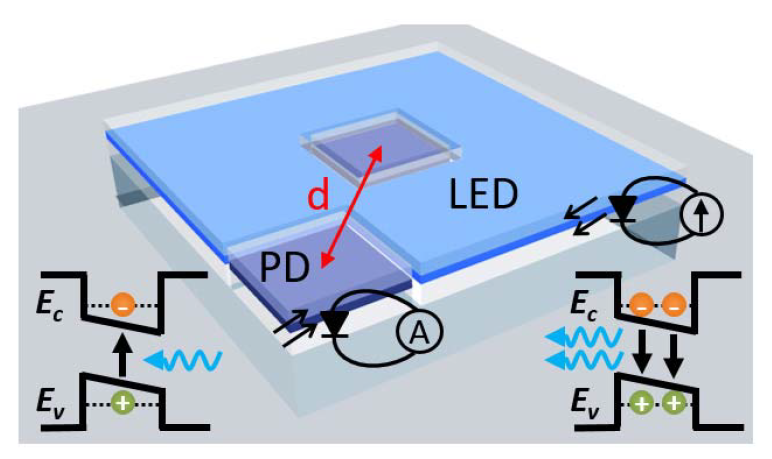
Figure 4. Schematic diagram of device.
Non-contact surface roughness measurement device
Prof. Kwai Hei Li’s team reported the fabrication and characterization of miniature GaN devices for surface roughness measurement. The GaN devices manufactured by wafer-level processes provided light-emitting and photoelectric detection capabilities to measure the intensity change of light reflected through different roughness surfaces, thereby enabling the detection of average surface roughness ranging from 0.025 μm to 1.6 μm.
The sensor performance was compared with the optical fiber measurement, and the ability to monitor the surface roughness in real-time was proved. The device had the advantages of non-contact, non-destructive, compact structure, simple operation, and in-situ measurement ability. It was of great value for practical and industrial surface measurement applications.
Their results, entitled “A Miniature GaN Chip for Surface Roughness Measurement,” were published in IEEE Transactions on Electron Devices.
Jiahao Yin, a doctoral student at SUSTech, is the first author of this paper. SUSTech is the first unit of this paper.
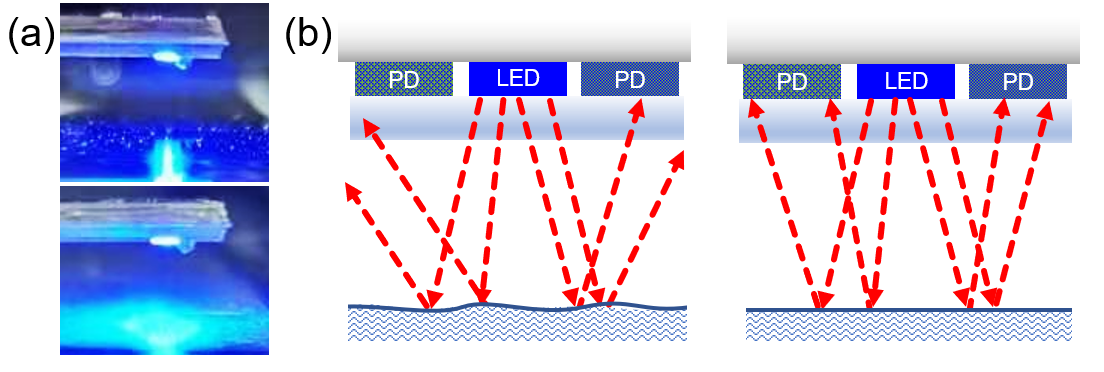
Figure 5. (a) Sideview optical images of the operating chip measured on specimens with smooth and rough surfaces. (b) Schematic diagrams of light scattering occurring at high and low surface roughness.
High-performance GaN light-emitting diode stripes
Prof. Kwai Hei Li’s team proposed a stripe-shaped light-emitting diode (LED) with a size of 7500 μm × 300 μm. By optimizing the design of the electrodes, the current can be uniformly injected into the elongated chip to achieve a uniform light distribution without the use of external optical elements.
Compared with traditional square LEDs, the output power of strip LEDs was increased by 29.3 % and 57.9 % at 400 mA and 1000 mA driving current, respectively. White light emission can also be demonstrated by covering the chip with a yellow phosphor film. Bar LED had the advantages of reducing light intensity density, uniform lighting, and improving light output. It was not only suitable for various lighting applications but also can be used as the backlight unit of the display.
Their results, entitled “High-Performance III-Nitride Light-Emitting Diode Stripes,” were published in IEEE Transactions on Electron Devices.
Haotian Jin and Liang Chen, visiting graduate students from Huazhong University of Science and Technology (HUST), are the co-first authors of this paper. SUSTech is the first unit of this paper.

Figure 6. Optical images of (a) square-shaped and (b) stripe-shaped LEDs.
Paper links (In order of appearance above):
IEEE Transactions on Electron Devices: https://ieeexplore.ieee.org/document/9444549
Sensors and Actuators: B Chemical: https://www.sciencedirect.com/science/article/pii/S0925400521013794?via%3Dihub
IEEE Transactions on Electron Devices: https://ieeexplore.ieee.org/document/9263328
IEEE Transactions on Electron Devices: https://ieeexplore.ieee.org/document/9521571
IEEE Transactions on Electron Devices: https://ieeexplore.ieee.org/document/9528852
To read all stories about SUSTech science, subscribe to the monthly SUSTech Newsletter.
Proofread ByAdrian Cremin, Yingying XIA
Photo By